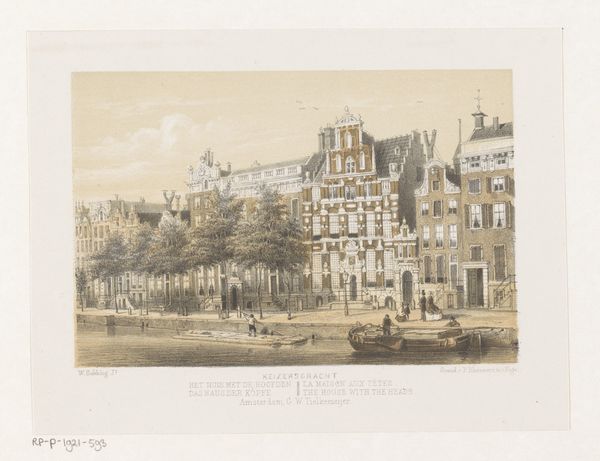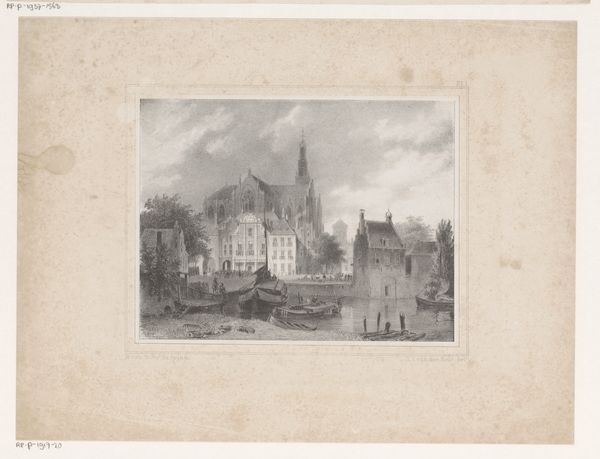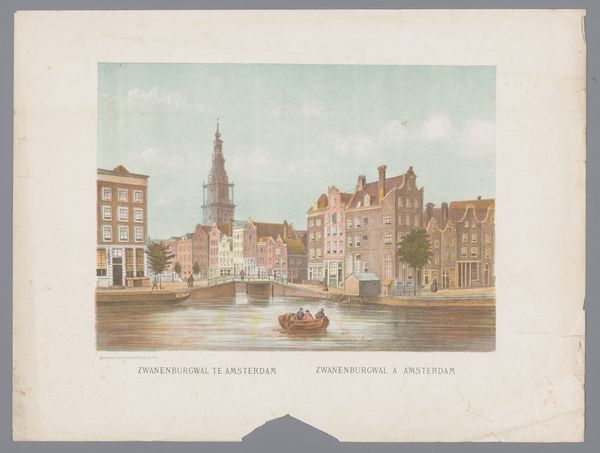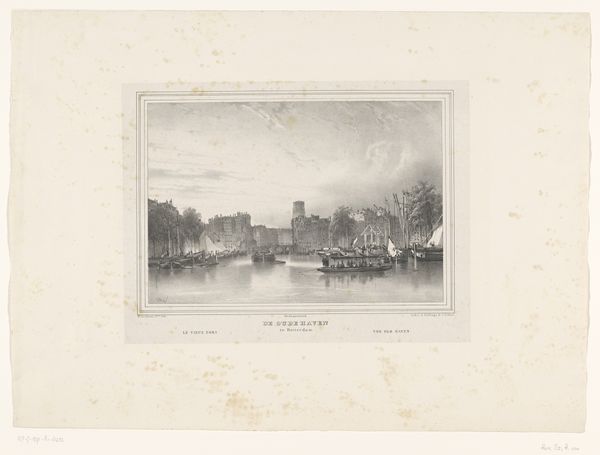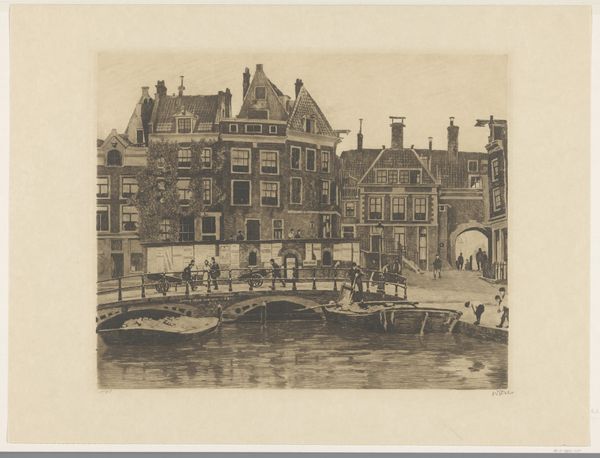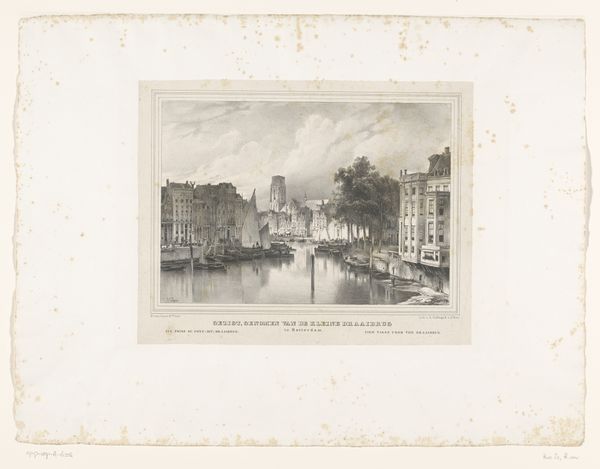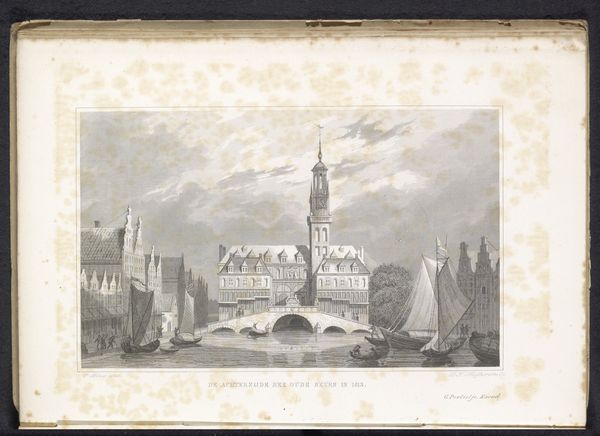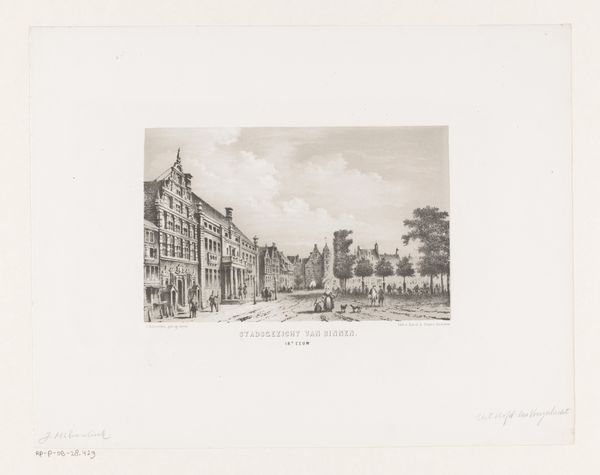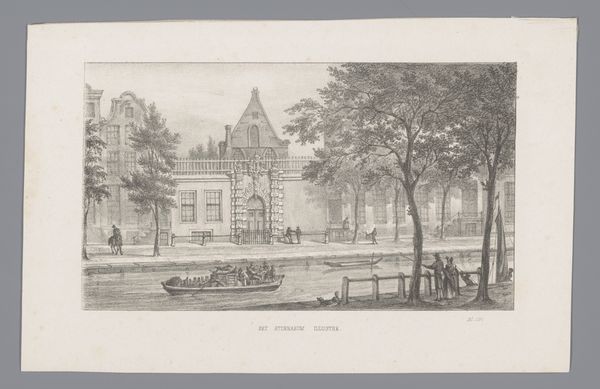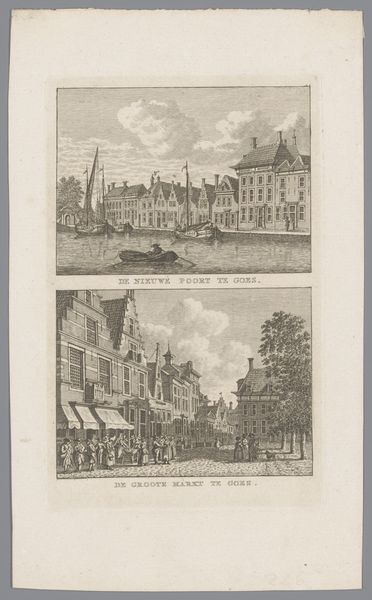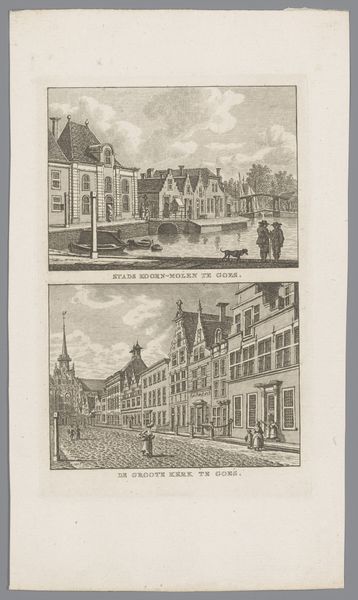
Dimensions: height 723 mm, width 989 mm
Copyright: Rijks Museum: Open Domain
Editor: So, here we have "Gezichten op het Binnenhof aan de vijverkant in 1598 en 1879," which translates to "Views of the Binnenhof on the Vijver side in 1598 and 1879." It’s a watercolor piece from 1879 by an anonymous artist, held at the Rijksmuseum. It’s fascinating to see the same scene depicted nearly 300 years apart! I find the top view to be somewhat idyllic while the bottom view has some more gothic architecture. What do you make of this dual composition? Curator: It is quite charming, isn’t it? These paired images offer a tangible glimpse into how time gently reshapes our world. Looking at the top image, rendered in that soft watercolor, I feel a distinct Romantic sensibility—a nostalgic embrace of nature. Now, consider the artist, positioning the viewer right at water level; almost as if we’re present at the shore witnessing a historic moment. It’s a deliberate invitation, wouldn’t you agree, to personally reflect upon time’s passage, history and the ever evolving world around us. What do you think? Editor: That makes sense. There's definitely an intentionality to framing the views this way. It also makes me wonder if it's accurate...it looks like more artistic license was taken than strict architectural representation. Curator: Ah, that's a delicious thought! The artist becomes a time traveler and story teller, using gentle watercolor washes and clever composition. In doing so, does it still convey deeper truths of transformation? Or rather… what does transformation itself mean? Editor: Hmmm, transformation is change, but viewed through the subjective lens of experience... Interesting! Curator: Exactly! And aren't these glimpses valuable portals to other views that reflect each others time-travelling possibilities. Thanks to the artists ability to convey meaning through watercolor images, it is clear that his intention of depicting a historic change really captures our interest as we look at them now.
Comments
No comments
Be the first to comment and join the conversation on the ultimate creative platform.
